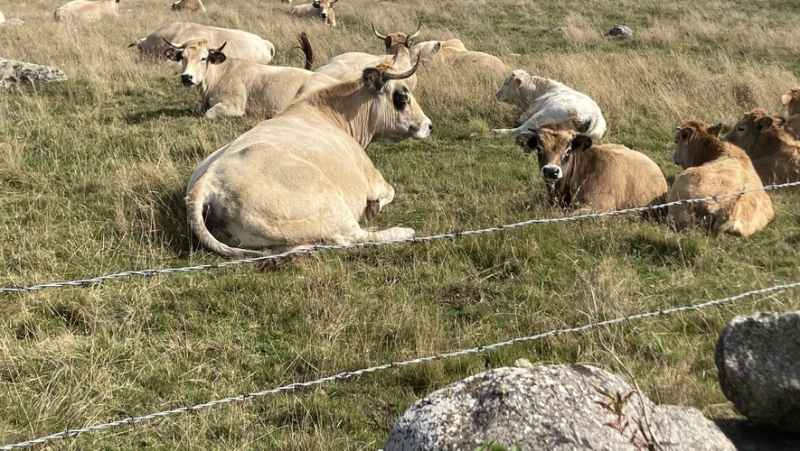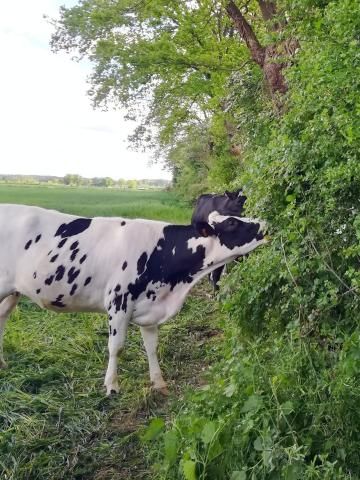Fodder trees considered on Aubrac to feed cows during critical periods

Pour nourrir les troupeaux, des arbres fourragers. Midi Libre – STEPHANIE BOULOIR
A discussion is underway in the Aubrac Regional Natural Park to feed the cattle.
In Aubrac, at the end of summers that are drier than others, when high temperatures and lack of water have burned the grass on the plots, ash leaves are traditionally given to cows to supplement their diet and delay as much as possible the use of hay kept for the winter. However, the ash tree is threatened by dieback, a fungus that causes the trees to die and spreads quickly. Thus, a Park action program intended to promote the resilience of the Aubrac meadows has a section on the search for alternative solutions to ash, to supplement the feeding of herds in times of drought.
An experiment in New Aquitaine
During the month of September, a group of technicians from the Aubrac and Auvergne Volcanoes Regional Natural Parks, the Cévennes National Park, the Lozère Copage, the Haie du Cantal mission and the Bonnefont agricultural college, in Haute-Loire, made a study trip to the National Research Institute for Agriculture, Food and Environment (INRAE) in Lusignan, in New Aquitaine.
On this site, a dairy farm of seventy-two cows is experimenting with several fodder systems, including tree leaves, to supplement their diet. Since 2014, the site has deployed a Trognoscope, a plantation of fifty-two species of trees and shrubs pruned into "pollars", that is to say, topped to force the production of branches and leaves at cow height.
The site managers evaluate, for each species, the palatability of the leaves for the herd and their nutritional values (digestibility, nitrogen content, tannins and trace elements).

Food at nose height. INRAE LUSIGNAN
As well as the ability of species to withstand, once a year, a pruning in pollard: 50 cm from the ground, to 80 cm, or in plesse, when the trunk is notched and laid on the ground to create vertical regrowth. The preferred species of these dairy cows are the white mulberry and the elm lutece (resistant to Dutch elm).
The Aubrac breed adaptable to several species
The first (white mulberry) is not suited to the Aubrac climate, but the elm could be tested. The Aubrac breed, more hardy than those raised on the Lusignan experimental station, could probably be satisfied with other species. Among the richest and most digestible are wild cherry, alder, goat willow, chestnut and lime. In the INRAE system, the cows graze directly, at their height, the pollarded trees. Each cow will therefore help herself according to her needs and this saves the farmer from having to prune the tree green. On the other hand, the hedge must be protected from the herd until July, so as not to hinder its growth.
The Park wishes to experiment with several species of fodder trees in Aubrac, to test their ease of implementation for breeders and their palatability for Aubrac cows.
If breeders are interested in being supported, technically and financially for the planting of a fodder hedge, they can contact Ugolin Bourbon-Denis, Agro-environment project manager at the Park, on 07 57 68 48 68. I subscribe to read the rest




